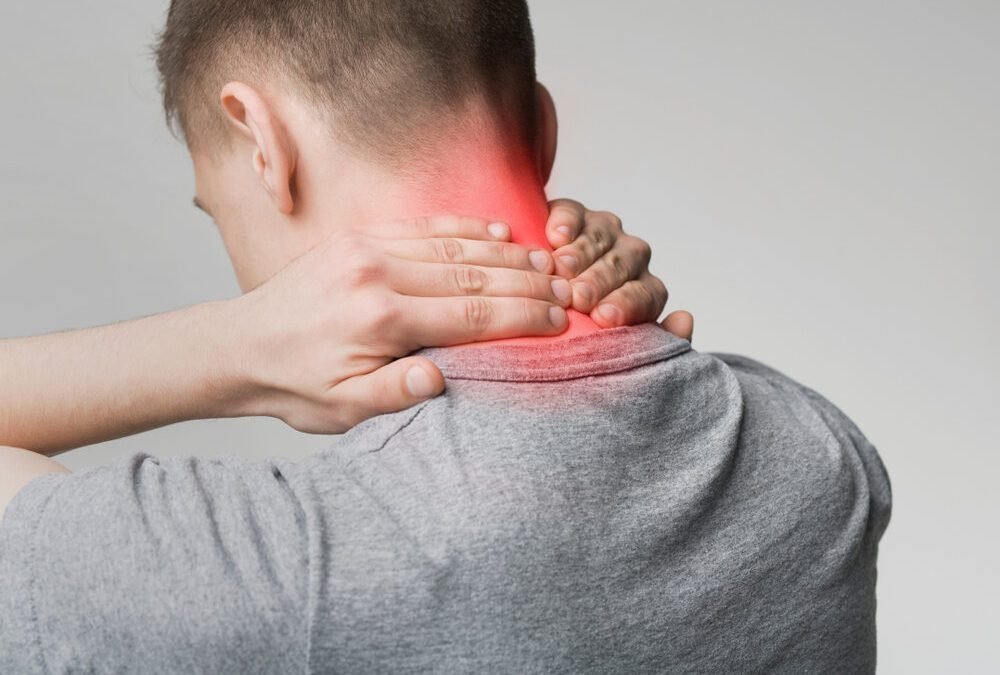BACK PAIN & LUMBAR SPINE CONDITIONS: UNDERSTANDING BACK PAIN

The lumbar spine, or lower back, is vulnerable to a variety of acute and chronic conditions that can significantly restrict mobility. Common causes of lower back pain include muscular strain, disc herniation, and disc degeneration, all of which can impair a person’s ability to move comfortably and perform daily activities.
DEGENERATIVE DISC DISEASE
Degenerative disc disease involves the gradual weakening or breakdown of one or more intervertebral discs, which normally function as shock-absorbing cushions between the vertebrae. While commonly associated with the natural aging process, it can also result from spinal injuries or repeated stress on the back.
Discogenic Pain
Discogenic pain originates from a damaged or degenerating spinal disc— the soft, cushion-like structures that enable the spine to bend, flex, and twist. It is a common cause of chronic lower back pain and often results from wear and tear or injury affecting the disc’s structure.
HERNIATED DISC/PROLAPSE INTERVERTEBRAL DISC
The soft discs between the vertebrae in your spine allow flexibility, twisting, bending, and shock absorption. When damaged, the soft center of a disc can push through the outer wall, causing a herniated disc. This bulge presses against the nerves in your spine, leading to pain and discomfort.

LUMBAR RADICULOPATHY/SCIATICA
Lumbar radiculopathy is caused by irritation or compression of one or more nerve roots in the lumbar spine. Since these nerves extend to the hips, buttocks, legs, and feet, an issue in the lumbar region can lead to symptoms in these areas. Sciatica is a common result and may stem from various problems affecting the bones and tissues of the lumbar spinal column.

FACET JOINT SYNDROME
Facet joint syndrome is a condition affecting the facet joints of the spine, where one vertebra connects to another. These joints provide support to the spine while allowing it to bend and twist. When affected by this syndrome, the joints become stiff and painful, leading to discomfort and limited movement.

SPINAL STENOSIS
Your spinal nerves travel through the spinal canal and exit through openings known as “foramen.” If any of these spaces become too narrow, it leads to nerve compression, a condition called “spinal stenosis.” This problem most commonly occurs in the neck and lower back.

OSTEOARTHRITIS OF THE SPINE
If you’re experiencing persistent back or neck pain, it may be due to osteoarthritis of the spine—the most common form of arthritis. For many people, this condition develops gradually with age and can limit your ability to stay as active as you’d like.

SACROILIAC JOINT PAIN
The sacroiliac joints, or “SI” joints, are where your hips connect to your spine. Although they allow only limited movement, they shift slightly as you move your body. When these joints become damaged or diseased, they can cause significant pain.

FAILED BACK SURGERY SYNDROME(FBSS)
Also known as “Post-Laminectomy Syndrome,” this condition is a form of chronic pain that can develop in some individuals after spine surgery.

VERTEBRAL COMPRESSION FRACTURE
A vertebral compression fracture (VCF) occurs when a spinal vertebra collapses or breaks, commonly due to osteoporosis, trauma, or metastatic disease. This injury typically causes sudden, severe back pain, decreased mobility, and can lead to spinal deformity if untreated.

SPONDYLOLISTHESIS
Spondylolisthesis occurs when a lumbar vertebra slips out of place and slides forward, altering the shape of your spine. This misalignment can compress the nerves in the spinal canal, as well as those exiting the foramen (open spaces on the sides of the vertebrae). The compression of these nerves can lead to pain and other related issues.

SPONDYLOSIS
Spondylosis is a crack that forms in a narrow bridge of bone at the back of a vertebra, one of the bones that make up your spine. This injury typically occurs in the lumbar spine and can affect people of all ages, though it is most commonly seen in children and teens, as their bones are still growing.

PIRIFORMIS SYNDROME
Piriformis syndrome is a condition that affects the narrow muscle located in the buttocks. Symptoms often worsen with prolonged sitting, walking, or running, causing discomfort in the affected area.
